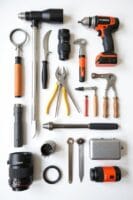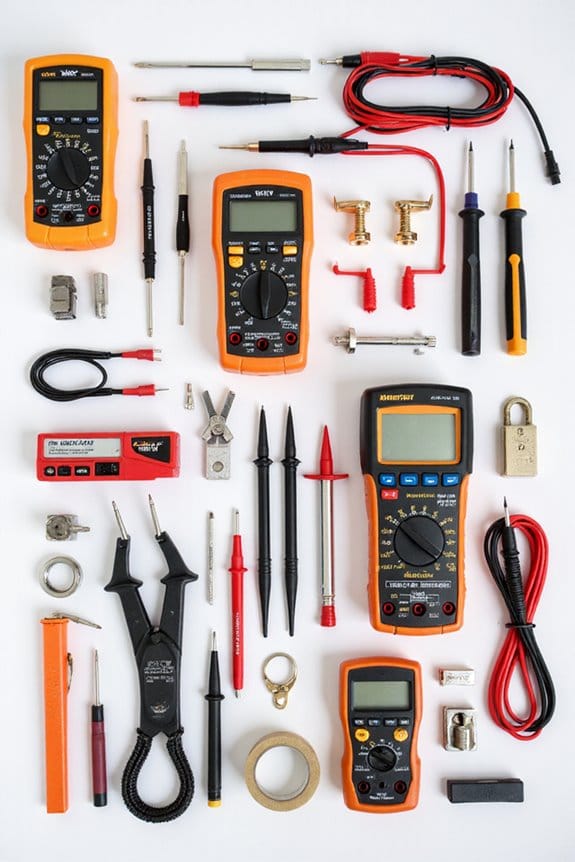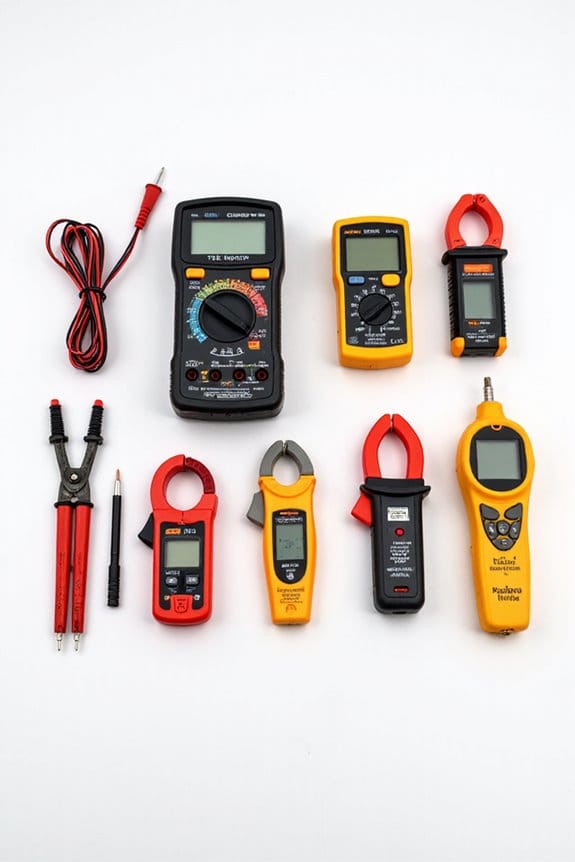To maintain testing equipment accuracy, I recommend following these key steps: 1) Calibrate regularly based on manufacturer guidelines—it’s like regular check-ups! 2) Conduct routine visual inspections for wear and tear. 3) Clean your gear with mild detergents; keep it shining bright! 4) Store everything in a controlled environment to avoid temperature fluctuations. 5) Invest time in training—proper use is essential. Trust me, keeping track of these will pay off. And guess what? There’s more to explore on this topic!
Key Takeaways
- Regularly calibrate instruments according to manufacturer recommendations and historical data to ensure accuracy in measurements.
- Conduct routine maintenance and visual inspections to identify surface damage, corrosion, or wear that can affect performance.
- Implement proper cleaning practices and maintain a cleaning log to prevent contamination that may interfere with testing results.
- Control environmental conditions, such as temperature and humidity, to prevent sensor drift and maintain equipment reliability.
- Provide consistent personnel training and competency assessments to ensure operators effectively use testing equipment and follow procedures correctly.
Calibration Scheduling and Procedures
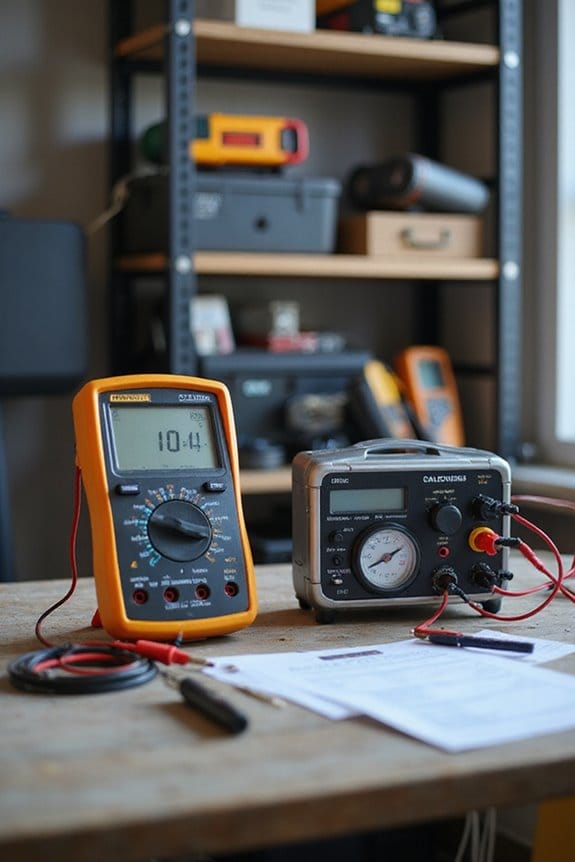
When it comes to maintaining the accuracy of testing equipment, I can’t stress enough how important proper calibration scheduling and procedures are. Here’s how I approach it:
- Identify Instruments: Start by figuring out which tools need calibration based on their role in inspections.
- Set Calibration Intervals: Use manufacturer recommendations and historical data to determine calibration intervals. Don’t skip the risk assessment—prioritize critical instruments!
- Keep Records: Maintain an updated inventory to track each tool’s calibration status. Use labels for easy visibility of due dates.
- Review Regularly: Adjust your schedules as needed. If something changes in your operations, your calibration schedule should too. Regular calibration is recommended to ensure accuracy in electrical testing tools, which helps maintain reliable performance over time.
Routine Maintenance and Inspections

After getting the calibration schedule sorted, it’s time to focus on routine maintenance and inspections. Here’s what I recommend:
- Visual Inspections: Regularly check for surface damage, corrosion, and wear. Look at electrical wiring for fraying or corrosion. Make certain indicators and displays are readable—nobody wants to guess!
- Functional Testing: Confirm that all equipment components operate within specified tolerances. Test sensors and signal outputs for any performance deviations. Don’t forget to validate power supplies to avoid pesky intermittent faults.
Proper Cleaning Practices

To keep our testing equipment in tip-top shape, proper cleaning practices are essential. Here’s how I tackle it:
- Protective Measures: I always wear gloves and safety glasses. It’s smart to check safety data sheets for the chemicals I use.
- Debris Removal: I start by removing visible dirt with soft cloths or compressed air—no scratching allowed!
- Cleaning Solutions: I prefer mild detergents mixed with warm water. A good scrub followed by rinsing works wonders.
- Drying: Air drying is best. I make sure everything is completely rinsed to avoid future test interference.
- Documentation: I keep a cleaning log. It helps with accountability and keeps us on track. Additionally, ensuring tools meet regional standards enhances their overall performance and reliability.
Environmental Control and Storage
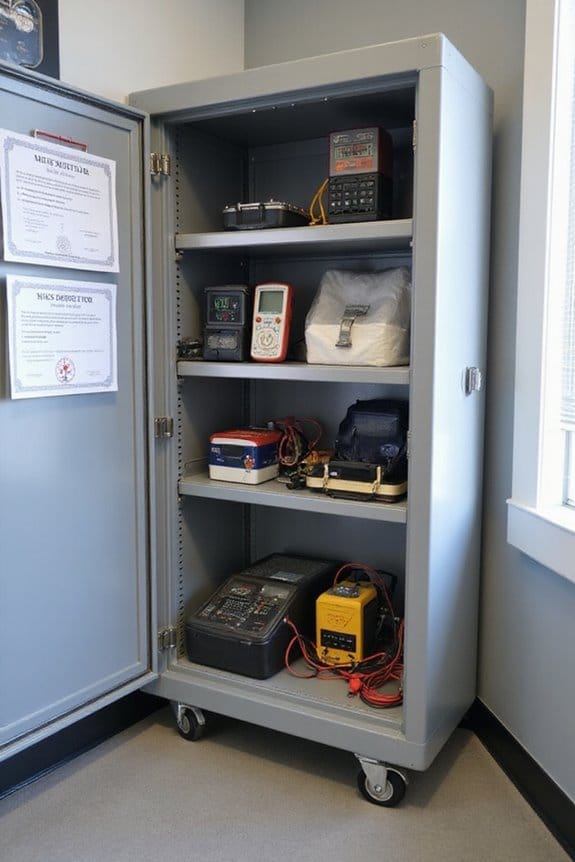
Maintaining the accuracy of testing equipment isn’t just about routine checks and calibrations; it also heavily relies on how we control the environment where it’s stored. Here are some key points to take into account:
- Temperature Control: Keep your equipment within the manufacturer’s recommended temperature range to prevent sensor drift. High humidity? That can lead to condensation and corrosion, so monitor it carefully. Additionally, ensure that the environment is suitable for high accuracy in temperature and humidity to avoid any discrepancies in readings.
- Vibration Mitigation: Place your instruments on vibration-isolated surfaces. Avoid storing them near heavy machinery because those constant vibrations can throw off your readings.
- Clean Environment: Dust and contaminants are the enemy. Use sealed storage, restrict access, and maintain a cleaning schedule.
Personnel Training and Competency

While it might seem like a no-brainer, the training and competency of personnel play an essential role in maintaining testing equipment accuracy. Here’s how we can guarantee our team is up to the task:
- Structured Training: Develop training methodologies that focus on specific equipment and procedures. This includes reviewing manuals and safety requirements.
- Hands-On Practice: Before anyone tests independently, they should practice with quality control samples.
- Competency Assessments: Use various evaluation methods, including direct observation and written exams. Regular re-assessments keep skills sharp.
- Ongoing Updates: Always align training with any equipment changes.
Documentation and Quality Assurance
When it comes to ensuring testing equipment accuracy, proper documentation and quality assurance practices are essential. Here’s what I’ve learned about documentation types that help maintain quality standards:
- Test Plans outline methods and resources.
- Test Cases detail procedures for verifying functions.
- Test Reports record outcomes and performance data.
- Requirements Documentation specifies criteria for accuracy.
- Change Requests track necessary corrections.
It’s vital to have a quality assurance program that formalizes calibration and maintenance protocols. This includes documenting everything, from environmental conditions to configuration settings. Keeping everything clear and up-to-date not only enhances accuracy but also prepares us for audits. After all, who doesn’t want to show off their meticulous work? Let’s keep our testing equipment sharp and ready for action!
Frequently Asked Questions
What Are the Signs of Inaccurate Testing Equipment?
Like a flickering light bulb, inaccurate testing equipment shows signs such as erratic readings, frequent calibration needs, or wear. I always check my maintenance schedule to catch these issues before they escalate.
How Do Temperature Fluctuations Affect Equipment Performance?
When I consider temperature fluctuations, I realize they greatly impact equipment performance stability. Temperature sensitivity can cause inaccurate readings, leading to inconsistent results. It’s essential to monitor and control temperatures for reliable testing outcomes.
Can Equipment Calibration Be Done In-House?
Yes, I believe in-house calibration is feasible. By following established calibration procedures and using traceable standards, I can guarantee accurate results while maintaining control over the process, ultimately saving costs and enhancing efficiency.
What Is the Role of Software in Maintaining Accuracy?
In my experience, software plays an essential role in maintaining accuracy. Regular software updates guarantee data integrity, preventing discrepancies. This ongoing support helps keep our equipment functioning properly and reliable in various operational conditions.
How Should Equipment Be Handled During Transport?
When handling equipment during transport, I always consider impact factors and adhere to transport guidelines. Proper packaging, secure positioning, and thorough inspections help guarantee everything arrives safely and in ideal condition for testing.


